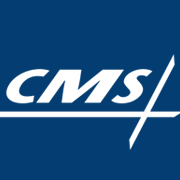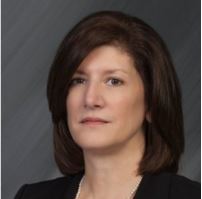CMS Proposes New Healthcare Payment Models for Medicare Part B
The proposed healthcare payment models will seek new ways to assist clinicians in finding the right medication for their patients.

- New healthcare payment models are being advised by the Centers for Medicare & Medicaid Services (CMS). From alternative payment models to the Medicare Shared Savings Program and the Comprehensive Care for Joint Replacement program, the federal agency has been revolutionizing reimbursement and attempting to reduce medical costs throughout the country.

More recently, CMS announced a new plan for Medicare Part B that would bring about new healthcare payment models when it comes to covering the costs of prescription medication, according to a press release from the agency.
The proposal seeks to assist clinicians in offering more high level medical care and CMS is seeking input and comments on the proposal from stakeholders over the coming weeks. Medicare Part B is a program in which prescription drug coverage is provided as long as these medications are assigned in a physician office or hospital outpatient department. The type of medications covered vary from cancer drugs and antibiotics to “eye care treatments,” CMS reports.
The proposed healthcare payment models will seek new ways to assist clinicians in finding the right medication for their patients. The proposed rule seeks to incentivize both healthcare providers and patients especially when it comes to prescribing “the most effective drugs.”
Additionally, through these healthcare payment models for Medicare Part B, physicians would be rewarded if their patients have positive health outcomes after a medication is prescribed and consumed.
CMS is looking to put an end to any incentives in a fee-for-service payment system that stimulates providers to go against assigning well-performing medications. The proposed rule is also looking to incentivize physicians to prescribe some of the most effective drugs as well as cutting down on out-of-pocket costs for patients and educating the patient on proper use of the medication.
“These models would test how to improve Medicare beneficiaries’ care by aligning incentives to reward value and the most successful patient outcomes,” Dr. Patrick Conway, CMS Deputy Administrator for Innovation and Quality & CMS Chief Medical Officer, stated in the press release. “The choice of medications for beneficiaries should be driven by the best available evidence, the unique needs of the patient, and what best promotes high quality care.”
CMS is constantly looking to improve care coordination in an effort to boost quality of care and patient health outcomes. It is hoped that these innovative healthcare payment models in Medicare Part B will play a role in achieving these goals. In particular, CMS hopes to reduce the ever-rising cost of prescription drugs.
In 2015, healthcare spending on prescription drugs amounted to $457 billion throughout the nation. That amounts to almost 17 percent of total healthcare spending, CMS reports. Additionally, last year the Medicare Part B program paid $20 billion to cover the costs of outpatient drugs prescribed by doctors and hospital outpatient centers.
“First and foremost, our job is to get beneficiaries the medications they need. These proposals would allow us to test different ways to help Medicare beneficiaries get the right medications and right care while supporting physicians in the process,” Andy Slavitt, Acting Administrator for CMS, said in a public statement. “This is consistent with our focus on testing value-based care models like we have been doing with physicians and hospitals in ACOs. Models like this one can help doctors and other clinicians do what they do best: choose the medicine and treatment that keeps their patients healthy.”
The proposed rule has set up six different approaches to testing alternative healthcare payment models for Medicare Part B. These six approaches are outlined below.
1)Incentivizing providers to choose the most effective treatments and medications
- The problem at hand is that the current program actually penalizes doctors for choosing low-cost drugs even when they may have just as good of an outcome for a patient based on clinical evidence.
2)Putting a hold on patient cost-sharing of drugs or offering a discount
- Since the cost of drugs may be high for many patients, reducing these prices should bring about greater adherence to medication and improve healthcare access overall
3)Offering clinical decision support tools and analysis of prescribing patterns among physicians
- This may include trends on a physician’s geographic location or general national leanings
4)Pricing based on clinical effectiveness of drugs
- This could revolve around the same medication being used to treat two different conditions with better results in one disease than the other
5)Developing reference pricing for prescription drugs
- This would entail setting a standard rate for the cost of drugs that are therapeutically similar
6)Risk-sharing contracts related to patient health outcomes
- CMS would create agreements with drug makers integrating the price of medication to patient outcomes
Alternative reimbursement systems are becoming more popular not just at the federal government level but among health payers as well. Payers and providers working to create alternative reimbursement solutions such as bundled payments or accountable care organizations should benefit from lower costs and improved patient care.
“We believe transforming health care will help reduce waste, improve quality, improve member/patient satisfaction, and improve overall employee health and productivity,” Amy Oldenburg, Vice President of Network and Product Strategy Accountable Care Solutions at Aetna, told HealthPayerIntelligence.com. “So we see this as well worth the commitment and investment of time and resources to get there. Through our approach to move providers and hospitals toward full, product-based risk-sharing ACOs and helping them transform the way they do business, we know we can help build a healthier world.”

